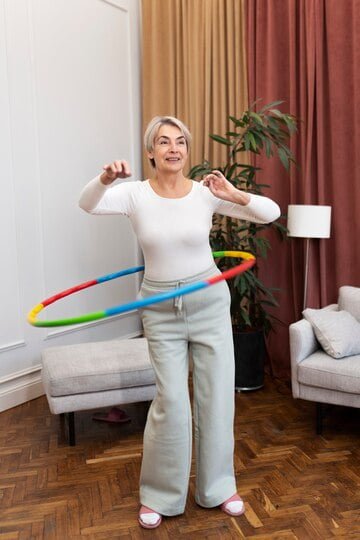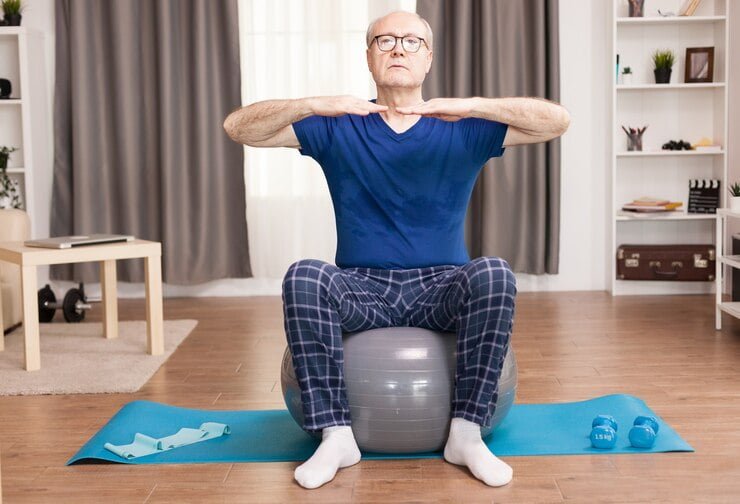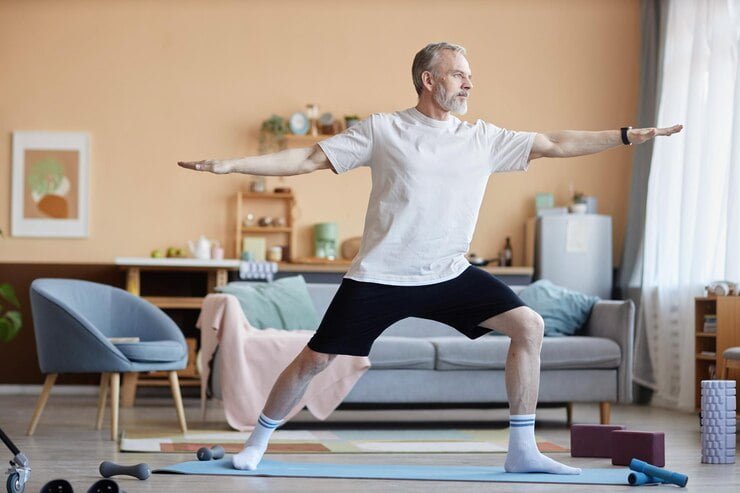
After a stroke, survivors often face significant mobility and balance challenges that can immensely affect their quality of life. However, appropriate balance exercises can help regain strength, stabilize and improve overall mobility. This complete guide intends to provide useful insights into effective balance exercises for stroke patients thereby empowering both the victims and their caregivers.
Understanding Post-Stroke Balance Problems
Many individuals lose muscle strength and coordination after having suffered from a stroke which affects balancing. This is as an outcome of damage to motor control regions in the brain. As such, tasks that may have been simple or automatic now necessitate substantial effort and concentration.
The process of building muscles’ power, enhancing coordination, and gaining self-belief through doing concerted exercises is very vital during stroke recuperation. These particular workouts are directed at distinct muscular groups helping to make the body better stabilized in many different postures.
Benefits of Balance Exercises for Patients Who Have Had a Stroke
Some advantages that come with regular balance exercise among those who have had strokes include:
Enhanced Stability:
Strengthening muscles responsible for maintaining balance helps decrease chances of falling as well as increasing overall steadiness.
Improved Mobility:
Recovering equilibrium improves movement hence making it easier for victims to perform day-to-day activities.
Greater Confidence:
Completing these exercises provides them faith about their physical ability hence propelling them towards more improvement.
Better Coordination:
Better coordination between different muscles through balancing exercises results into smooth movements when done correctly by individuals in question.

Exercises to Improve Balance After Strokes
Before introducing any new training regime one’s physician or physical therapist must be contacted by people who previously had a stroke so as they could confirm whether these types of activities would comply with particular state of health or not. Below are few good examples of such balance workouts commonly included within the program on restoring skills lost due to strokes:
Sitting Marches
Goal:
Enhancing leg strength and coordination.
Method:
Sit on a firm chair having the feet positioned flat on the ground.
Raise your right knee as high up as possible while ensuring that your foot remains pointed.
Eventually, lower your right foot back down to the floor and also repeat the same with left knee.
Continue changing legs in this way for 10-15 times during every approach.
Shifting Weight When Standing
Objective:
Develop better balance via weight distribution
Procedure:
Stand parallelly spreading feet at shoulder width apart with hands laid on a stable surface like a table for support.
Begin by shifting body weight onto right foot raising slightly left one above ground level.
Retain it for several seconds before moving weight to another leg and lifting previous one up too for like 10 times on each side.
Walking Heel-to-Toe
Goal:
Improve coordination and walking balance
Method:
Ensure you are standing straight without separating feet out from each other.
Move the right leg forward so that its heel is placed exactly in front of the toes of the left leg already stepped forward.
Proceed in such a manner, i.e. right heel being placed directly in front of left toes followed by placing left heel directly in front of right toes, until there are made about 10-15 such steps.
One-Leg Stance
Purpose:
Strengthening muscles responsible for maintaining balance
Instructions:
Find some adjacent supportive objects around you to lean on if need arises.
Lift your right foot off the ground and stand only on your left foot instead.
Do it steady trying not to fall but not less than ten seconds because some people prefer holding this position till fifteen seconds.
Lower your foot on the right back down to the floor and do this again with your left.

Side Leg Raises
Purpose:
To strengthen hip muscles and enhance lateral stability.
Instructions:
Stand straight with your feet together, holding onto a stable surface for support.
Raise your right leg as high as possible to the side without bending at the knee.
Bring down your right leg to where it began and do same with the left leg.
Perform 10-15 repetitions on each side.
Sitting to Standing
Purpose:
To improve leg strength and balance while transitioning.
Instructions:
Sit on a solid chair with your feet flat on the ground.
Place hands onto armrests or thighs for support.
Lean forward slightly, then push through your legs till you rise into standing position.
Slowly come back down until you reach sitting position again. Perform 10-15 reps.
Wall Push-Ups
Objectives:
Strengthen the muscles of the upper body and improve stability.
Instructions:
Look at a wall with your feet spread a hip distance apart.
Position your hands on the wall at shoulder height and width apart.
Bend your elbows to lean closer to the wall, then use this position as a base for returning back to normal.
Repeat 10-15 times.
Clock Reach
Objectives:
Improve balance and coordination.
Instructions:
Take a wide stance with feet pointing forwards, holding onto something stable for support.
Think of a clock face on the floor in front of you.
Lift your right leg off the ground and reach it towards twelve o’clock as far as is comfortable before coming back down to starting position
Do again for three, six, and nine o’clock positions
Now change over to left leg and repeat exercise
Do 2-3 repetitions each side.
FAQs
Q1. How long should I wait before beginning balance exercises after having had a stroke?
A: Start doing exercises that focus on balancing just as soon as you get permission from your health care provider. With early intervention, outcomes can be improved upon by promoting faster recovery rates.
Q2. Is there any way that balance exercises can prevent falls?
A: Yes! By toughening up muscles that stabilize us while simultaneously improving coordination abilities these exercises help reduce drastically likelihoods of falling over or tripping on things like rugs especially by old people (Cvetkovic et al., 2019).
Q3. How often should I do balance exercises?
A: Incorporate balance exercises into your routine about 3-4 times per week if possible; consistency is important when creating noticeable differences in performance levels through such routines (Mosher et al., 2020).
Conclusion
Balance exercises form an integral part of stroke recovery treatments that concentrate on enhancing stability, increasing movement and improving ones’ quality-of-life. Incorporating these routines into regular activities enable sufferers to regain confidence in their physical abilities while striving for greater independence.
If stroke recovery is a struggle for you or someone you care about, consult with a physical therapist who can help you create a personalized exercise plan. It is essential to remember that even small steps matter and significant improvements can be made with commitment and encouragement.
Don’t hesitate to connect with professionals specializing in stroke rehabilitation to get more guidance and support. The survivors of this illness deserve not only care, but also an opportunity for active life.